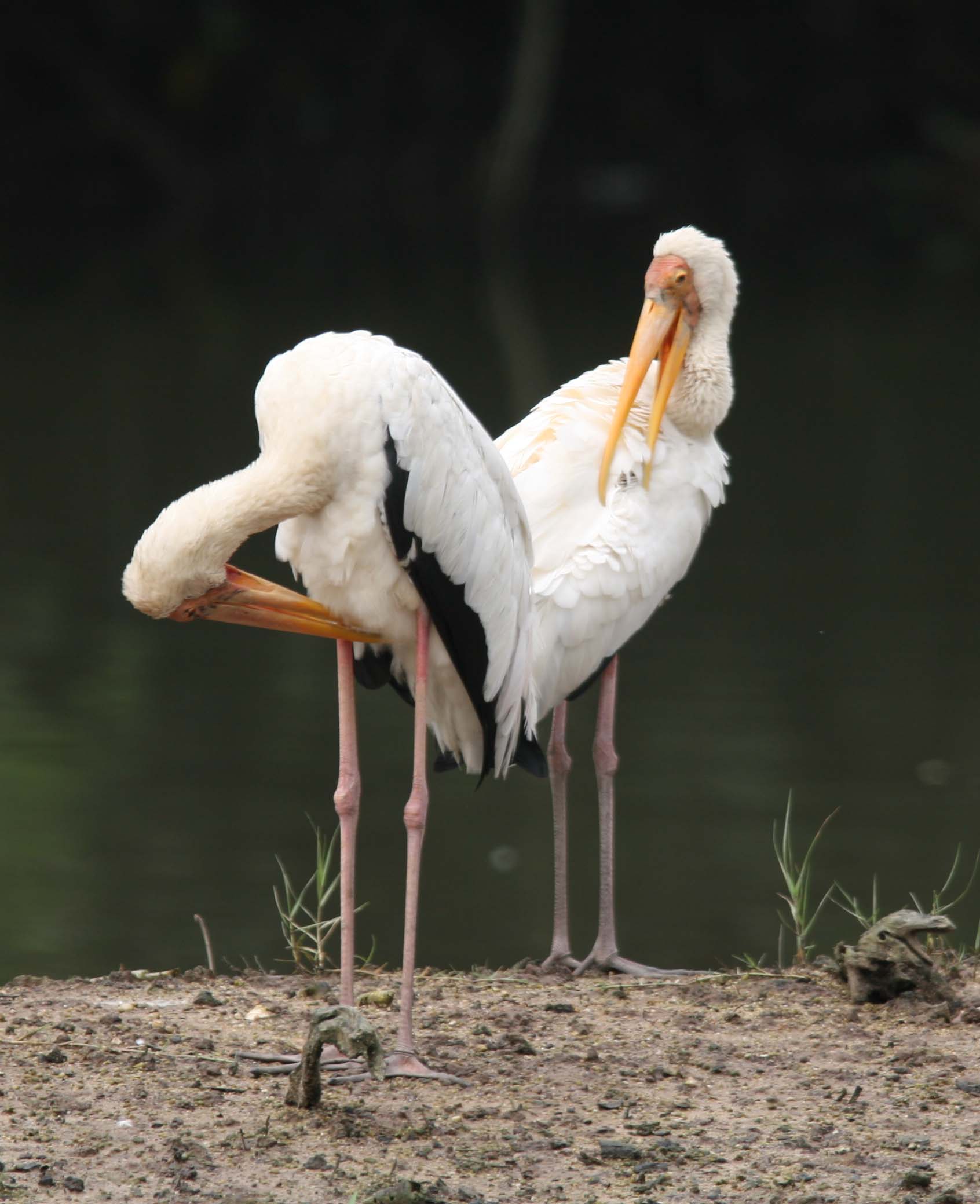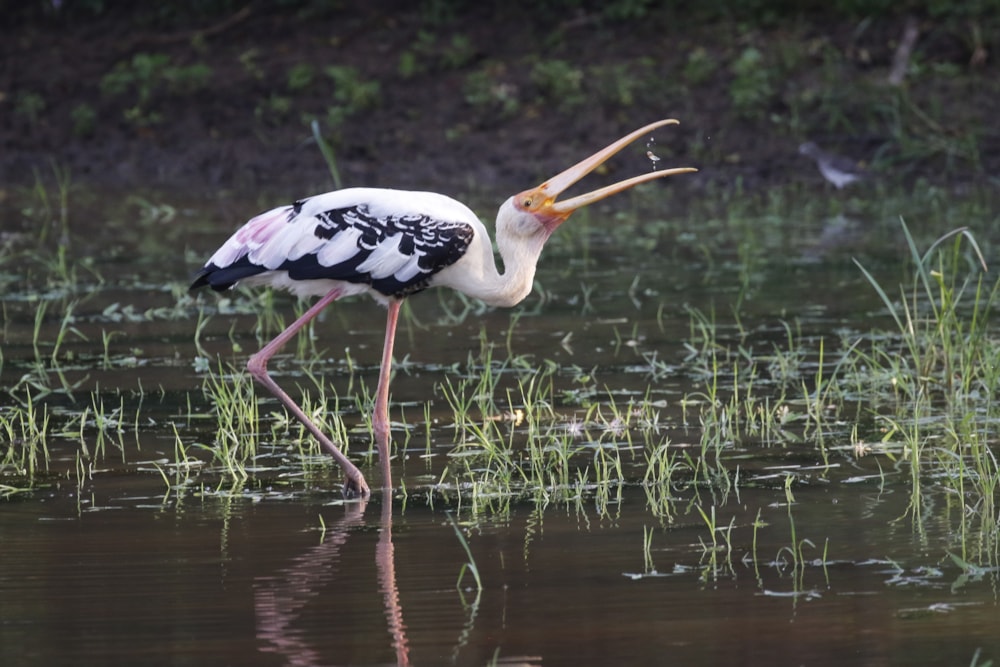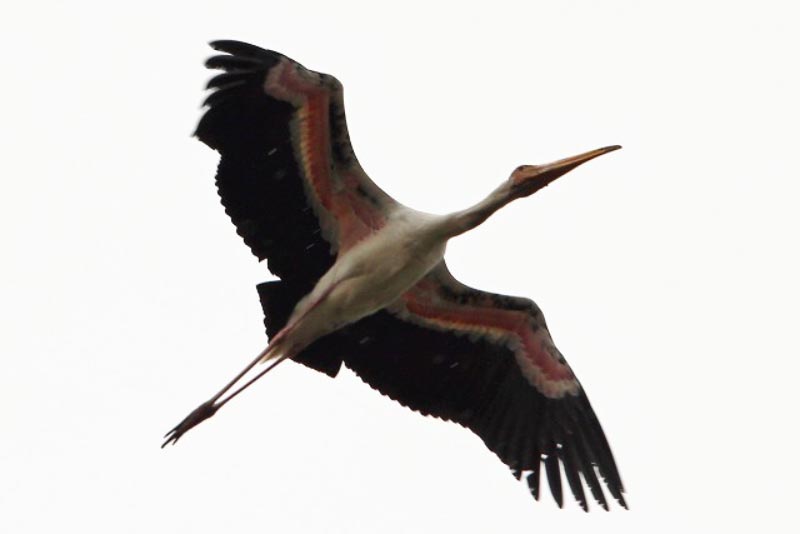A recent study published in Biological Conservation has highlighted the potential threats posed by hybridisation to the Endangered Milky Stork.
In the absence of other individuals of their own species, many rare and declining birds have been known to breed with similar but more widespread species and, in some cases, this can exacerbate the threat to the survival of the rarer taxon. Two classic examples of this are Golden-winged Warbler which increasingly hybridises with Blue-winged Warbler across a wide geographic area in the United States, and Baer's Pochard which freely breeds with other Aythya species, such as Ferruginous Duck and Common Pochard in East Asia.

Two Milky Storks at Sungei Buloh, Singapore, in November 2007 (Peter Gasson).
Milky Stork is another such species. It occurs in coastal mangroves, estuaries and other wetlands across South-East Asia, but its population is fragmented and as few as 1,500 individuals are estimated to remain in the wild. It continues to decline due to habitat destruction and hunting. However, another potential threat that makes its Endangered status even more precarious is apparent interbreeding with the much commoner and more widespread Painted Stork.
The ranges of Milky and Painted Storks overlap in Cambodia, as well as along the Malay Peninsula south to Singapore, where the latter has escaped from captivity and is now living wild. Storks are sociable birds that nest in mixed colonies, meaning the two species routinely come into contact. The limited choice of suitable partners for Milky Stork, which has come about due to its recent and drastic decline, is presumably behind increasing reports of the two species hybridising in the wild. The two species produce viable offspring, which can in turn breed and further dilute the gene pool.

Painted Stork is a slightly larger bird, with black-and-white patterned upperwing coverts, a pinkish wash to the tertials and, just visible in the above image, a broken black breast band (Chris Rose).
Milky Stork is slightly smaller than Painted Stork and is completely white, apart from the blackish flight feathers and tail. Painted Stork has more extensive black in the underwing coverts and a broken black breast band, as well as a strong pinkish wash to the tertials, which is particularly noticeable at rest. Hybrids show clear intermediate features and 'impure' Milky Storks tend to exhibit a pinkish wash to the wing coverts and the ghosting of the black breast band of Painted Stork.
In the southernmost Malay Peninsula, Milky Storks have been held in captivity since the late 1980s, with inadvertent cross-breeding events with Painted Stork occurring whenever the two were held in the same enclosure. A few of these hybridised storks escaped into the wild and, although some were recaptured, others continue to roam freely, posing a major threat to the genomic composition of the Milky Stork population in the region.

This individual, photographed in Singapore, appears to be a hybrid Milky × Painted Stork hybrid. Although having the clean white breast of a Milky Stork, the underwing coverts show a clear pinkish wash and plenty of black – both tell-tale signs of impure ancestry (Phil Ellis).
The new study set out to genetically document the extent to which hybridisation had impacted Milky Stork populations around Singapore. It found that, in a sample of 46 storks, more than 50 per cent (25 individuals) could be readily identified as hybrids, both by genetics and their physical features. The number of wild Milky Storks in southern Peninsular Malaysia and Singapore may number as few as ~100-150 individuals, and this high incidence of hybrids among them is very alarming for this declining species.
The results highlight the importance of immediate conservation action for Milky Stork, and of adding the threat of genetic contamination to the list of factors that put it at risk. At the southern tip of the Malay Peninsula, Singapore is situated directly adjacent to the last stronghold of pure breeding Milky Stork populations in the mangroves of eastern Sumatra. If the Singaporean population is allowed to increase in population size, hybrids could easily disperse and infiltrate these core regions, in turn compromising the wild Milky Stork gene pool and potentially having a disastrous impact on the species' future.
Reference
Baveja, P, Tang, Q, Lee, J G H, and Rheindt, F E. 2019. Impact of genomic leakage on the conservation of the endangered Milky Stork. Biological Conservation vol 229 pp59-66. DOI: https://doi.org/10.1016/j.biocon.2018.11.009.



